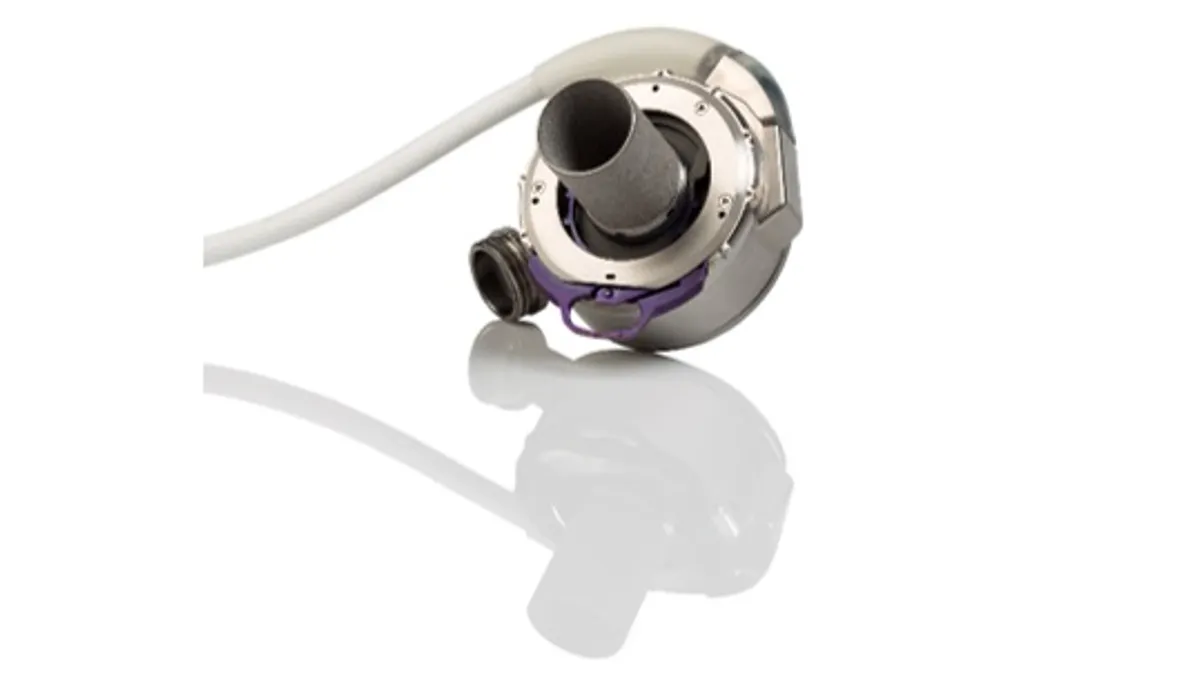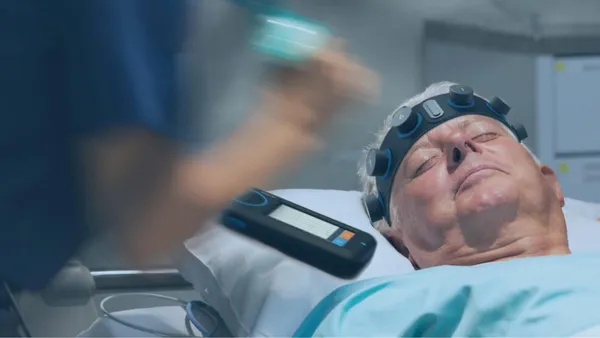Dive Brief:
- Abbott is warning doctors of the potential for harm to patients from two separate issues involving equipment used to power its left ventricular assist device (LVAD), an implant for treatment of advanced heart failure.
- Incorrect connection of the HeartMate 3 modular cable when exchanging controllers can result in no electrical power to the pump, causing serious injury or death. The problem has resulted in a reported death rate of 0.05% to date and a rate of hemodynamic compromise of 0.07%, Abbott said in one of two letters to clinicians dated Dec. 2 and posted by the U.K.'s Medicines and Healthcare products Regulatory Agency. Abbott did not specify the number of deaths.
- In a second letter, the device maker said it has received reports that static electricity has caused power loss to patients' HeartMate mobile power unit modules. There have been two reports of serious injury and no deaths due to the problem.
Dive Insight:
Abbott last year received FDA approval for use of HeartMate 3 as a destination therapy, or long-term treatment, for patients who are not candidates for a heart transplant. First developed as a bridge to transplantation, the mechanical pump assists the patient's own heart rather than replacing it. About a quarter of a million people in the U.S. live with advanced heart failure, but few will get a donor heart, according to the company.
The company is now warning doctors of two issues related to the power supply for the device that have the potential to cause serious injury to patients. A problem with the modular cable can arise if it is inserted at 180 degrees from the proper orientation, Abbott said.
While it may appear that a physical connection has been made, there is no electrical connection to power the pump at 180 degrees from the correct orientation, the company said. Such an incorrect connection could cause a blown fuse and set off a "Controller Fault" alarm, with the potential for confusion, serious injury or death of the patient, according to the letter.
Controller exchanges are required to be performed by medical professionals in a hospital setting, but patients and their caregivers are trained on the procedure in case of emergency. The company recommends reviewing with patients, during the next clinical visit, the instructions for making an exchange to a backup controller, including paying attention to the markings on the controller and driveline. Patients should understand the need to have a caregiver present and to call the hospital contact if a controller exchange must be done outside the hospital.
There is a 1% worldwide complaint rate associated with the modular cable being inserted 180 degrees from the proper orientation, the company said.
On the second concern, involving excessive static electricity that can cause unrecoverable power loss and damage to the HeartMate MPU module when connected to the HeartMate 3 LVAD, Abbott reported a 0.2% worldwide complaint rate. The two serious injuries reported in connection with excessive static electricity were categorized as hemodynamic compromise, in which blood flow from the device is reduced or stopped.
Excessive static electricity is an issue only with the HeartMate 3 system operating with the MPU Module, Abbott said. HeartMate II devices are not affected. To reduce the impact, battery power is recommended instead of the MPU Module to power the HeartMate 3 system when a patient is not sleeping or resting.
If a "no external power" alarm is sounded, patients should connect to battery power to power before attempting to determine the cause of the alarm. If the alarm persists, the patient should call the hospital contact.
To prevent generation of excessive static electricity during daily activities, Abbott is providing clarification for management when using the MPU Module with the HeartMate 3 system in the device's instructions and patient handbook. Doctors are urged to contact HeartMate 3 patients as soon as possible to provide them with the latest information.
Abbott field personnel also will re-train at all sites on the proper way to connect the controller cable and on methods to reduce the generation of excessive static electricity, the company said.
Abbott's HeartMate 3 is the third generation of the device that the company acquired in its $25 billion acquisition of St. Jude Medical completed in 2017. The device was originally developed by Thoratec, which St. Jude bought for $3.4 billion in 2015.










